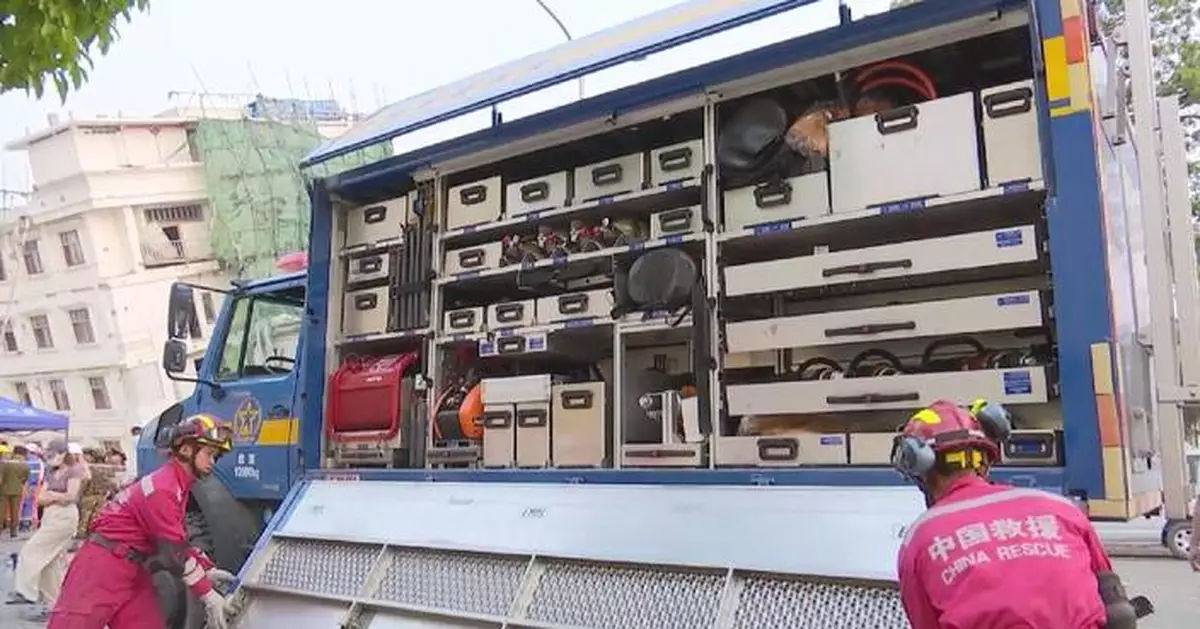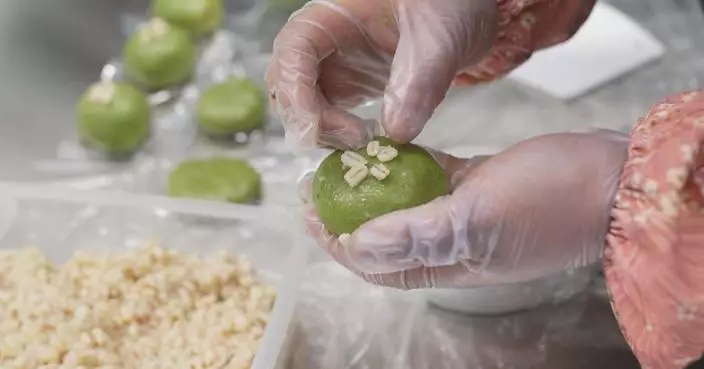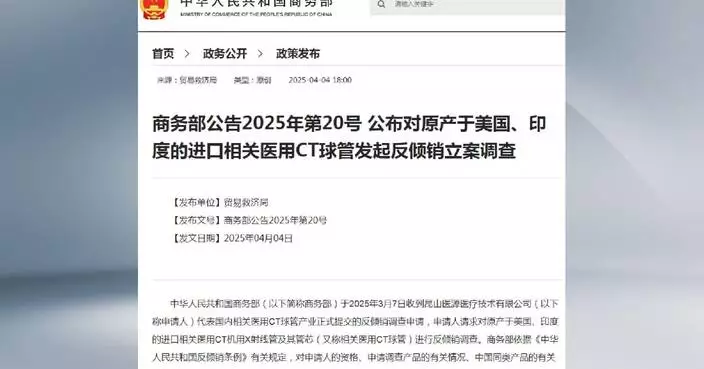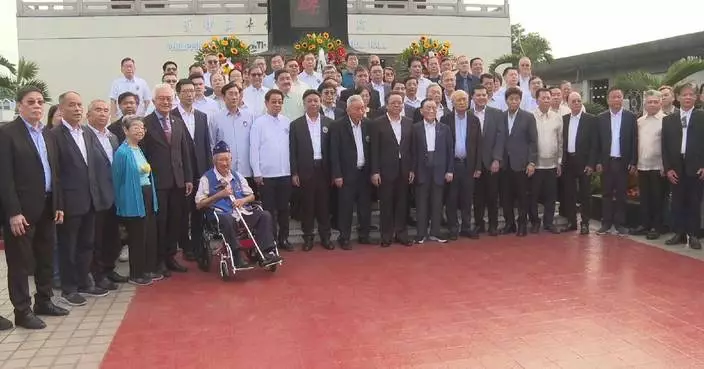Chinese rescue teams, equipped with advanced search and rescue tools, have been racing against time to save lives in central Myanmar following the devastating 7.9-magnitude earthquake struck on Friday.
The death toll has risen to 2,886, with 4,639 injured and 373 still missing, according to Myanmar's State Administration Council information team on Wednesday.
At the severely damaged Sky Villa apartment in Mandalay City, the search and rescue team from China's Hong Kong Special Administrative Region (HKSAR) operated drones to survey the shifting debris from above and life detectors to scan for trapped individuals.
"Our 51-member team brought diverse rescue tools to Myanmar, including concrete breakers, cutting equipment, infrared displacement detectors, life detectors, and drones. By collaborating with China Search and Rescue Team and sharing resources, we aim to save as many survivors as possible," said Jiu Yu-gok, commander of the HK rescue team.
At the same site, China Search and Rescue Team deployed snake-eye life detectors, which provide visual confirmation and detect auditory cues. With the device, the team pulled out three survivors from collapsed Sky Villa on Monday. "We drilled holes into the debris and used an endoscope and a snake-eye [life detector] to scan inside, adjusting positions until we determined the survivor's location. The device also transmitted real-time video, giving us a clear view of their condition," said Bi Hongyi, squad leader of China Search and Rescue Team.
China International Search and Rescue Team (CISAR) mobilized its earthquake response vehicle to Mandalay, with 369 specialized tools to save lives.
This all-in-one vehicle integrates power supply, lighting, and leak detection systems, alongside detection, search, medical aid, and logistics functions.
"This vehicle drastically reduces equipment switchover time, boosting operational efficiency. It allows us to penetrate deeper into disaster zones without manual hauling of gear, making on-site rescues far more effective," said Han Zhenze, CISAR captain.
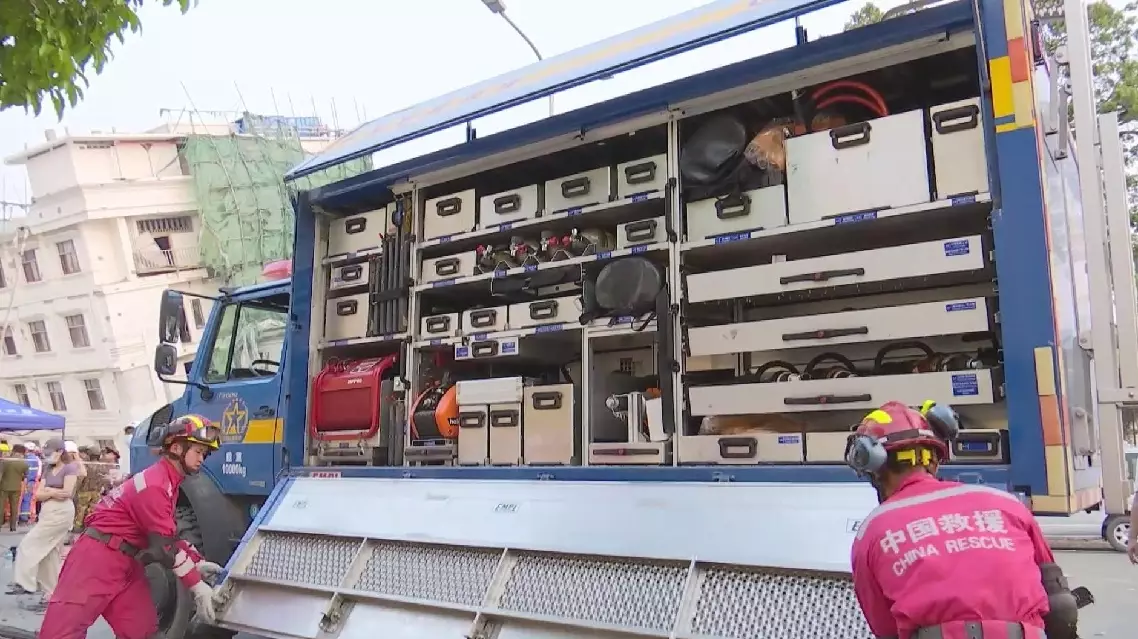
Chinese rescue teams deploy advanced equipment in Myanmar quake search
As the Qingming Festival approaches this Friday, various traditional folk activities have been held across China, celebrating the rich cultural heritage of the occasion.
With a 2,500-year history, Qingming Festival, or the Festival of Pure Brightness, observed in early April, uniquely combines ancestral worship with the celebration of spring. Falling on the 15th day after the spring equinox, this ritual-rich observance reflects China's enduring values of ancestral veneration and inspires deep introspection about what gives life meaning.
In Sijia Village, Huayin City, northwest China’s Shaanxi Province, a unique swing festival is held to mark the occasion. Eighteen different types of traditional swings, such as the spinning wheel swing, the Bagua swing reminiscent of a rotating carousel, and the balance swing designed for two people, have attracted many visitors.
Historically, Sijia Village served as a military post guarding the strategic Tongguan pass, a former mountain pass and fortress located south of the confluence of the Wei and Yellow Rivers. The swing tradition in the village has its origins in military training exercises like climbing and river crossing. The local swing culture further developed as regional trade flourished, eventually evolving into the "swing festival" that continues today.
"It's very exciting and tests your skill, endurance, and most importantly, your arm strength. You need to maintain balance," said Qu Xiangyang, a visitor.
In Rudong County, Nantong City, east China's Jiangsu Province, another traditional Qingming activity takes place - kite flying.
Flying kites as a way of making wishes is an age-old Qingming custom in this region. As a result, the Qingming Festival in Nantong is also known as the "Kite Festival."
The local Banyao whistling kite making skills is listed as one of the first national intangible cultural heritage items.
According to a folk culture expert, people traditionally write the names of diseases or misfortunes on paper, attach it to a kite, and release it into the sky. This practice is believed to drive away illness and disaster, while also serving as a way to make wishes.
In south China's Guangdong Province, a large tug-of-war competition is underway in Maoming City. Teams from different towns and streets are competing, attracting many locals to cheer on their teams.
Tug-of-war, which originated during the late Spring and Autumn period (770 BC - 476 BC), became part of Qingming customs during the Tang Dynasty (618-907). Emperor Xuanzong of the Tang Dynasty once organized large-scale tug-of-war competitions for the festival.
"Tug-of-war became very popular in the Tang Dynasty, even emerging as the national sport. It originated in the Jingchu region and later spread across the country. In ancient Lingnan (Southern China), tug-of-war games were a common tradition. Through these events, people seek to pray for peace, prosperity, and abundant harvests," said Yao Guojun, vice dean of the College of Arts and Law, Guangdong University of Petrochemical Technology.
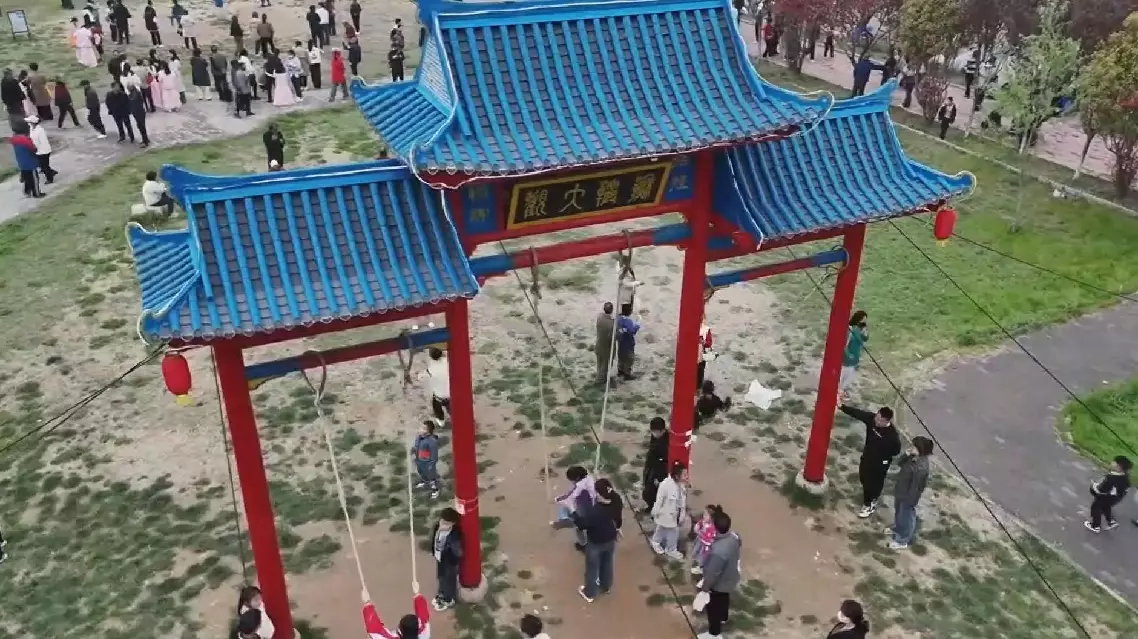
Traditional folk activities held for Qingming Festival



